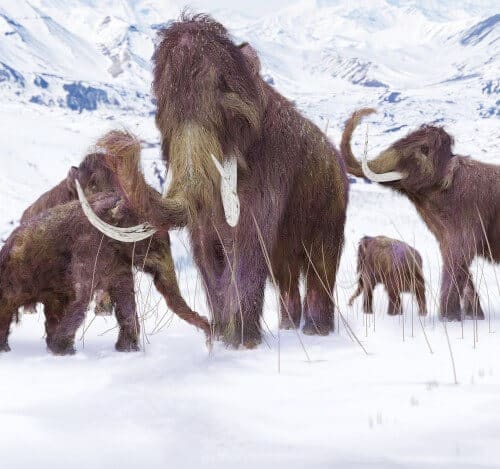The researchers say that bringing the mammoth back to life has become more realistic with the accumulation of its genomic knowledge, but it will take several more decades. But even without the recovery, interesting insights were obtained about the genetic diversity of the last mammoths and about a previous event of near extinction about 250 thousand years ago

An international team of researchers has mapped an almost complete genome of two Siberian woolly mammoths. The new mapping reveals the most complete picture to date - including new data about the evolutionary history of the species and the conditions that led to its mass extinction at the end of the Ice Age.
The meaning of the discovery is that bringing extinct species back to life becomes a more realistic possibility, which can be achieved within a few decades," says evolutionary geneticist Hendrik Poiner, director of the Center for Ancient DNA at McMaster University in Canada and a researcher at the University's Infectious Disease Research Institute.
"With the help of the complete genome and this data, we can begin to understand what makes a mammoth a mammoth (compared to an elephant) and some of the prominent reasons for its extinction, a particularly complex and difficult puzzle," he said.
While scientists have long argued that the changing climate and hunting by humans were the main causes of the mammoths' extinction, the new data suggests the existence of many factors that played a role in their long evolutionary history.
Researchers from McMaster, Harvard Medical School, the Swedish Museum of the History of Science, Stockholm University and others have created a high-quality genome from samples taken from the remains of two male woolly mammoths that lived about 40 years apart. One lives in northeastern Siberia, and its age is estimated at about 45 thousand years. The second one, who is estimated to be one of the last populations, lived about 4,300 years ago on Wrangel Island in the Arctic Ocean, which also belongs to Russia.
"We discovered that the genome from one of the last mammoths shows low genetic variation and clear evidence of inbreeding, probably due to the small number of mammoths that managed to survive on Warangal Island in the last 5,000 years of the existence of the mammoth species." says Love Dalen, professor of bioinformatics and genetics at the Swedish Museum of Natural History.
The scientists used advanced technology to decipher bits of information and particularly broken DNA left over from the ancient species, in order to decipher and sequence the genomes. Through careful analysis, they determined that the animal's population suffered and recovered from a sharp decline 250-300 thousand years ago. However, the researchers say, another sharp decrease in population size occurred at the end of the Ice Age and marked the end.
"The dating of these samples shows that at the time when the ancient Egyptians built the pyramids, mammoths still lived on the island," Poiner says. The qualitative data can help us understand the evolutionary dynamics of elephants in general and assist in efforts to prevent their extinction."
The collection of the findings began in 2006 when they mapped for the first time a partial mapping of the mammoth genome, using DNA extracted from a corpse discovered in the Yukon and Siberia.
The study was published in the journal Current Biology.
More of the topic in Hayadan:

2 תגובות
NN - I love you!!!
(What about the uncle? 🙂 )
I wish they could bring back the mammoth